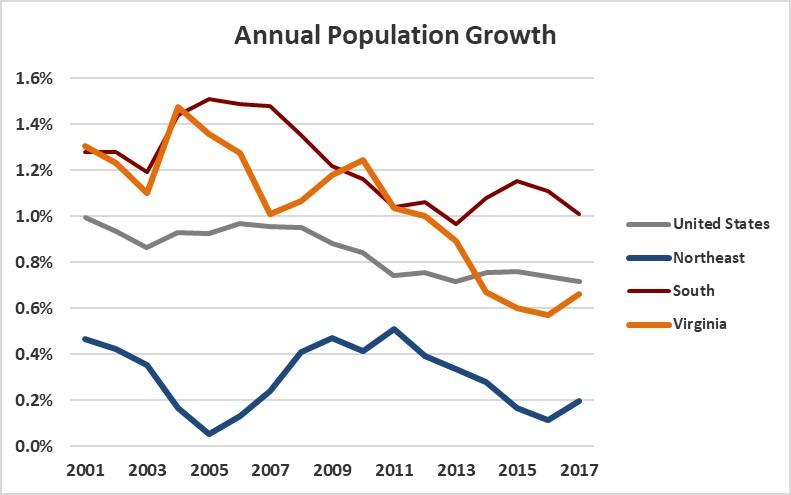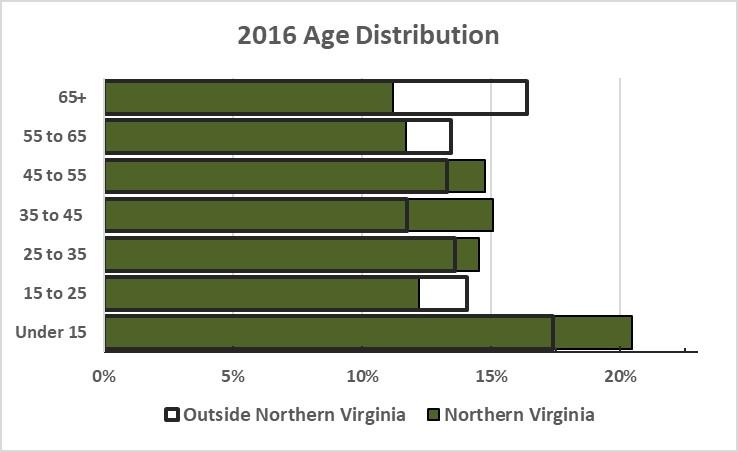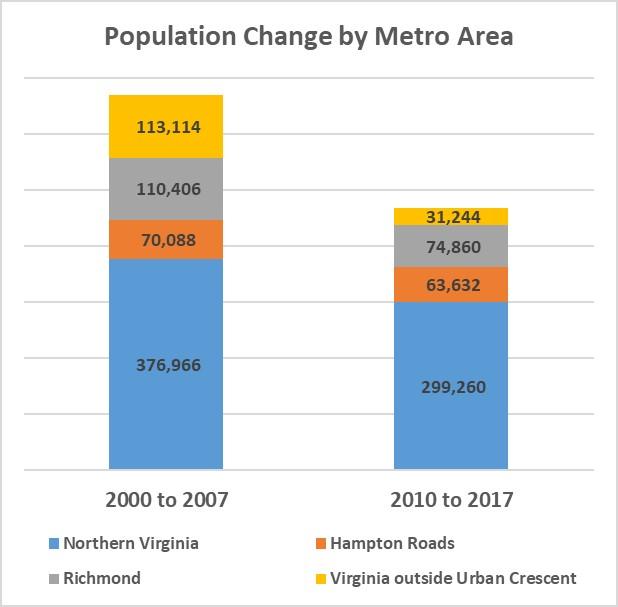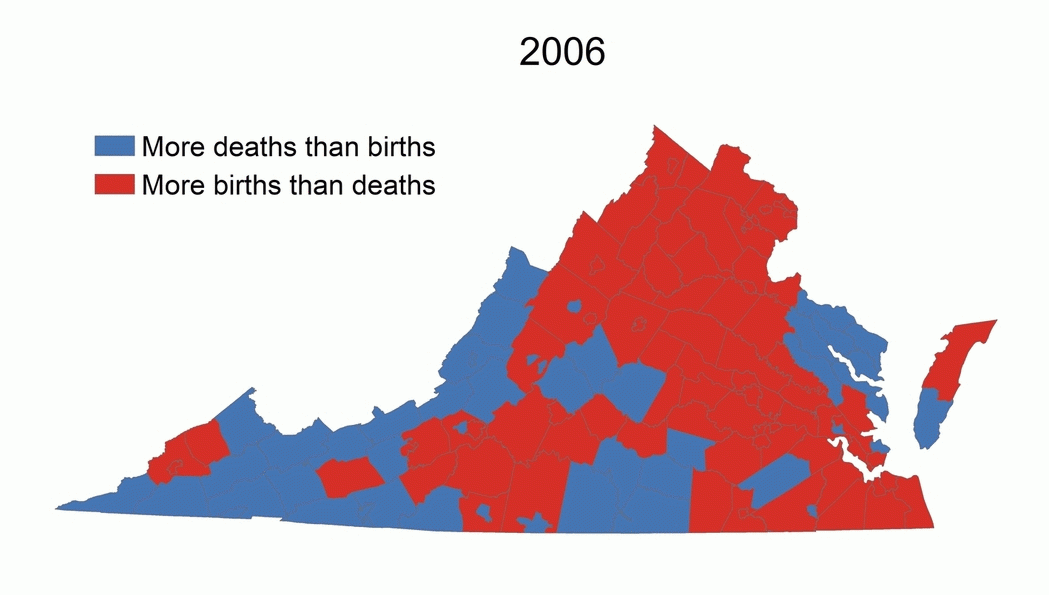2017 estimates show growth slowing, with most concentrated in Northern Virginia
For decades, Virginia’s population has grown steadily, adding around 900,000 residents each decade. After accounting for slowing growth due to an aging population, Virginia’s population should have increased by around 590,000 residents by this point in the decade; however, the Weldon Cooper Center’s 2017 population estimates show that Virginia’s population has only grown by 469,000 residents since 2010. This slowdown in population growth means that Virginia has over 100,000 fewer residents than expected, the equivalent of Albemarle or Spotsylvania County.

The most obvious reason why Virginia’s population has grown more slowly than expected over the past few years is the federal budget sequestration which has hobbled Virginia’s economy, particularly in Northern Virginia. Since the federal budget sequestration began in 2013, Virginia has had more people moving out than in each year. A rise in retirees leaving Virginia for warmer climates and young adults moving to metro areas with stronger economies and cheaper housing has also boosted out-migration from Virginia.
Given that the federal budget sequestration continues to impact Northern Virginia’s economy, it may seem counterintuitive that most of Virginia’s population growth this decade has been in Northern Virginia. But Northern Virginia, like Virginia overall, receives most of its population growth from having more births than deaths, which is primarily based on its age structure rather than the economy.

Northern Virginia’s age distribution skews younger than the rest of Virginia in large part due to the influx of young adults, particularly recent college graduates who often then start families and to the outflow of residents once they reach retirement age. As a result, Northern Virginia has around three times as many births as deaths, fueling its population growth. Last year, Prince William County surpassed Virginia Beach City in size to become Virginia’s second largest locality, while earlier this decade Loudoun County surpassed Chesterfield County to become the fourth largest locality.
The recent slowdown in Virginia’s population growth has been most apparent in the Commonwealth’s smaller metro areas and rural counties, where the population has grown by only 31,244 residents over the last seven years compared to 113,114 residents during the first seven years of the 2000s. Aside from counties in the Coalfields and deep in Southside, nearly all Virginia counties still have more people moving to them than away, but the age groups moving to Virginia’s smaller metro areas and rural counties have tended to be older while young adults continue to leave most rural counties in search of education and work opportunities. Both of these trends have caused the number of deaths to rise and the number of births to fall, slowing population growth outside Virginia’s largest metro areas.

Over the last decade the number of deaths has steadily grown and births have steadily declined, in 2011 deaths exceeded births outside of Virginia’s three largest metro areas for the first recorded time. Ten years ago, Virginia counties that had more deaths than births were almost all rural, but in an increasing number of metro and suburban counties, deaths now exceed births. In 2016, 64 of Virginia’s 95 counties had more deaths than births, up from 36 counties in 2006.

Last year, Virginia’s population growth rate ticked up slightly after slowing every year since 2010. But an aging population in Virginia and across the country means that the ceiling for population growth is lower than it was earlier in the decade and will be even lower in the next decade. Without a surge in population growth, by 2020 Virginia could have close to 200,000 fewer residents than would have been expected based on past population growth trends. Meanwhile, Virginia’s aging population will likely cause the number of counties with more deaths than births to continue to increase, slowing population growth throughout the Commonwealth, even in Northern Virginia.


